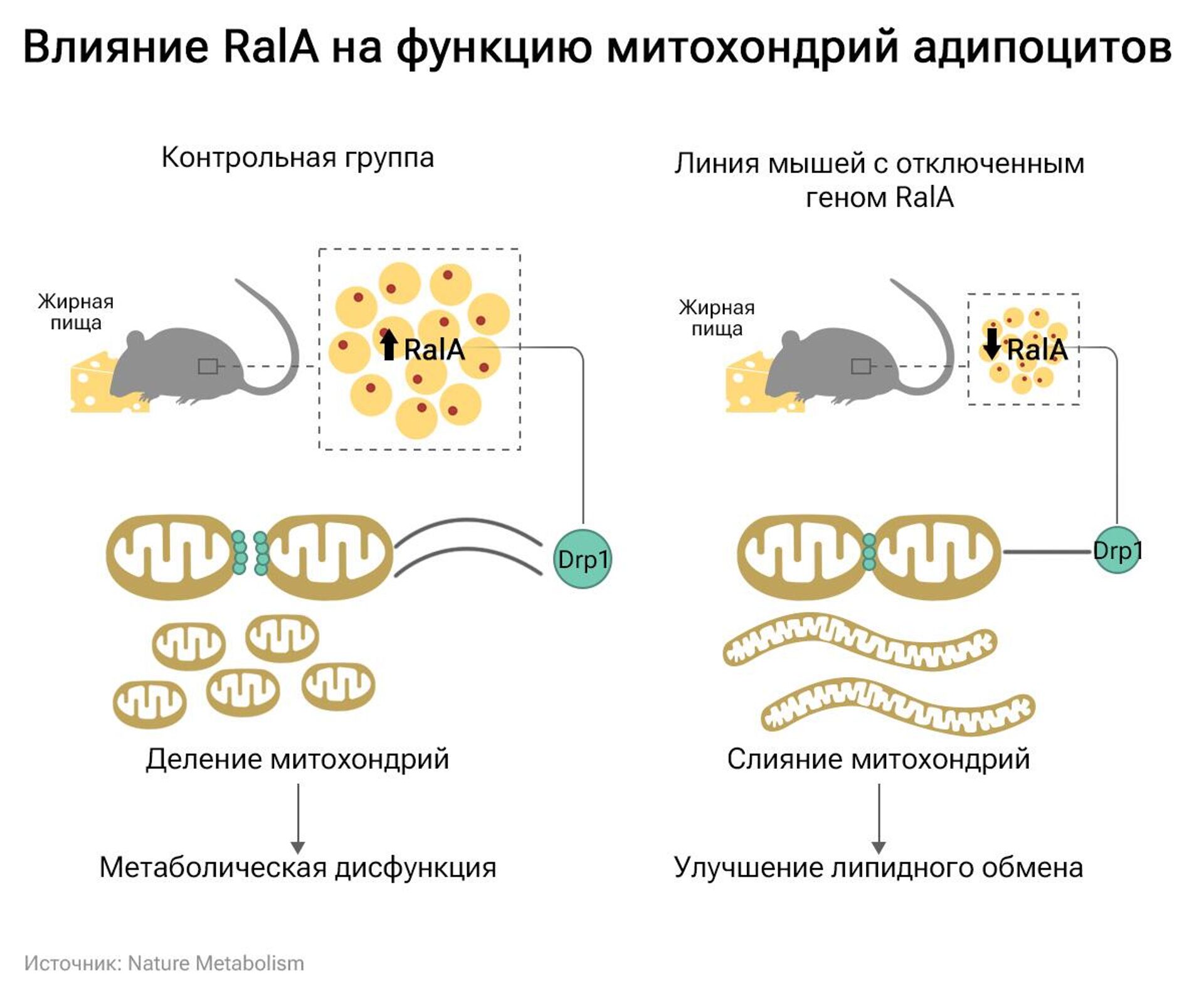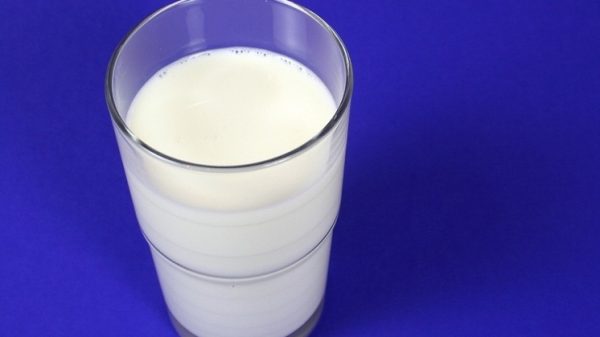
MOSCOW, February 2, Vladislav Strekopytov. It is known: the fatter a person is, the more difficult it is for him to lose weight. Recently, biologists have figured out why this happens. It turns out that when there is an excess of fat in the body, the mechanism of mitochondrial functioning is rearranged — the “energy stations” of cells become smaller and lose their ability to decompose fat.
Obesity and adipose tissue
The World Health Organization estimates that 1.9 billion adults and 380 million children worldwide are overweight or obese. Compared to 1975, this figure for adults has doubled, and for children and adolescents it has increased by an order of magnitude. Obesity is recognized by WHO as a global epidemic, which is directly associated with a sharp increase in the number of cardiovascular diseases, the spread of type 2 diabetes, breast, colon and pancreatic cancer.
Half a century ago, it was believed that overweight people simply lacked the willpower to lose weight. Over time, it became clear: the cause of obesity is in violations of specific physiological processes. Today, obesity is considered a chronic metabolic disease. It occurs when the body accumulates too much fat, which is stored in adipose tissue, which is made up of specialized cells called adipocytes.
Adipose tissue is divided into white and brown. White is a reserve of lipids that the body puts aside for a rainy day. The main function of brown is thermogenesis, the body’s ability to maintain internal temperature. Accumulations of excess fat are associated with white adipose tissue, which forms in the abdominal wall, on the buttocks and thighs, and around the internal organs. Brown tissue is most developed in newborns. In an adult, it is present in the form of a thin subcutaneous layer, behind the sternum, along the spine and between the muscles.
Where does fat come from
In conditions of excess nutrients, the body turns on the mechanism of lipogenesis — the conversion of excess carbohydrates into lipids. These are mainly fatty acids that accumulate in adipocytes of white adipose tissue. During periods of hunger, the reverse process begins — lipolysis. Lipids are released and used as fuel by internal organs.
The main function of adipocytes is to store a supply of fatty acids and, as needed, convert it into a form that is energetically available to the body. The main volume of these cells is filled by a huge lipid droplet, surrounded by a rim of cytoplasm, and on the periphery are the cell nucleus and a small number of mitochondria.
In mitochondria, which are also called the “energy stations” of the cell, lipid oxidation occurs and ATP (adenosine triphosphoric acid) is formed, a universal source of energy for all processes in the body. The efficiency of processing accumulated fat depends on how well these cellular organelles work. However, until recently, scientists did not know what factors influence the functioning of adipocyte mitochondria.
Excess weight gene
Mitochondria change shape in response to changes in the cellular environment, the supply of certain substances and the body's need for energy. Receiving protein signals, mitochondrial components reorganize—either elongate by fusion or divide into fragments. Smaller, fragmented mitochondria are less efficient at processing lipids because they oxidize fatty acids less efficiently.
Biologists from the University of California San Diego School of Medicine, along with colleagues from Sweden, Australia and Germany, in experiments on mice, found that in obesity, the ability of mitochondria to oxidize lipids deteriorate. This makes it difficult to burn fat and starts a vicious cycle of weight gain.
The researchers found that the adipocytes of mice fed a high-fat diet produced more of the enzyme RalA, which activates the Drp1 protein, which is responsible for mitochondrial division. In addition, this enzyme modulates insulin in adipose tissue, and when it is in excess, glucose metabolism is disrupted. The authors note that when excess fat accumulates, RalA is produced only in white adipose tissue. Nothing like this happens in the brown one.
To test the hypothesis that a high-fat diet leads to mitochondrial dysfunction due to RalA activity, the scientists created a line of mice with the gene encoding this protein knocked out. On the same diet, the transgenic animals gained less weight, were more glucose tolerant, and had significantly better metabolic profiles and liver function tests than normal control mice.
“Chronic activation of the RalA gene plays a critical role in the transition from healthy weight to obesity,” study leader Professor Alan Saltiel said in a press release. “Calorie imbalance from overeating leads to weight gain and also triggers a metabolic cascade that reduces the capacity of fat cells burn energy, which further exacerbates obesity.»
Breaking the vicious cycle
The study authors suggest that a similar mechanism is at work in humans. Humans also have the RalA enzyme, and it also activates the Drp1 protein, which triggers mitochondrial division.
“Direct comparison with real-world clinical results confirms the relevance of our discovery to humans and suggests that by developing new treatments, we may be able to prevent obesity by targeting the RaIA pathway,” explains Saltiel. “By understanding the mechanism, we are one step closer to developing targeted therapy.” therapy that could address the problem of weight gain and associated metabolic dysfunctions.»
In principle, it was known before that obesity disrupts the functioning of mitochondria. The main achievement of the authors is that they found out the reason — they established which increase in protein leads to this.
“Overweight people often have difficulty losing weight,” notes Lyudmila Frolova, general practitioner at Lakhta Clinic LLC. “Understanding exactly how hormones, eating behavior and metabolic processes interact helps to understand why, once begun, the process of weight gain is not only self-sustaining, but also intensifies over time.”
“The root cause of obesity is an imbalance between incoming and expended energy,” emphasizes Ksenia Ievleva, an employee of the Scientific Center for Family Health and Human Reproduction, Candidate of Medical Sciences. “White fat cells are the main “storage” of energy in the body. But they are needed in strictly defined quantities. In obesity, the process of inflammation and excess production of reactive oxygen species leads to damage to mitochondria. Impaired functioning can cause conditions affecting the entire body.»
Perhaps in the future, «turning off» one gene will allow people to eat whatever they want and not gain weight. In the meantime, experts say, to break the vicious cycle of weight gain, an integrated approach is needed: a healthy lifestyle, a balanced diet, regular moderate exercise, sleep and stress reduction.


























































Свежие комментарии